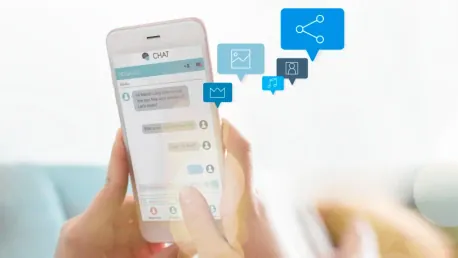As artificial intelligence (AI) continues to evolve at a breakneck speed, custom chatbots are no longer reserved for big companies with a dedicated team of coders. In 2025, AI chatbots are being used by businesses across the spectrum to reduce customer wait times, assist with lead generation processes, onboard staff, and more. The best part? You don’t need to learn a scratch of code to create one, thanks to the wide range of free no-code solutions available. If you’re interested in building an AI chatbot for free, we’ll guide you through how to do this in seven simple steps. We also explain how you can build a low-cost chatbot using ChatGPT, using its Plus plan, for those looking to streamline the process even further.
1. Identify the Objective of Your Chatbot
First things first, you need to decide what you want your chatbot to accomplish. You’ll probably already have a pretty clear idea of your chatbot goal, but if you’re still unsure, some common use cases include customer service, sales, internal company support, and employee training. Customer service chatbots can answer frequently asked questions (FAQs), access company knowledge bases, and assist with customer account issues like password resets. Sales chatbots streamline the sales process by capturing useful customer information, qualifying leads based on specific criteria, and following up with prospects. On the other hand, internal company chatbots can act as a useful HR resource by answering employee queries, processing leave requests, providing IT support, and helping to assist with technical issues. Meanwhile, chatbots designed for employee training can streamline the onboarding process by providing new employees with recommended training modules, tracking their progress, and answering any questions they may have. Aside from its primary purpose, it’s also worth considering other important details like its target audience, the tone of its responses, and which specific tasks you require it to perform. While it’s easier to focus on a specific niche, if you operate in a specialized industry, it’s also possible to make an AI chatbot with multiple purposes.
2. Choose a Free No-Code Platform
Now you’ve established your chatbot’s goal, it’s time to choose which platform you’re going to move forward with. Fortunately, there are lots of free options to choose from. While their features may be fairly basic compared to paid alternatives, they will still be robust enough to deal with the demands of first-time chatbot creators. Lots of free chatbot platforms have distinct specialisms, so we recommend only considering builders that align with your agent’s intent. Tidio is a popular choice for creating AI customer service and e-commerce chatbots. Chatbots created using its free plan can facilitate up to 100 visitors per month and integrate with e-commerce platforms like Shopify and WooCommerce. Zapier, another versatile option, allows businesses to create free no-code chatbots through its integration with ChatGPT. Its free plan performs 100 tasks a month and can be used to create a wide variety of chatbots with specialisms from lead capture to research assistance. Google’s Dialogflow is a multi-purpose chatbot creator that can be used to create agents with a range of different focuses. The builder utilizes advanced conversational AI and lets free users make up to 1,000 requests per month. Botpress specializes in customer service and e-commerce chatbots using open-source technology and can integrate with third-party services using APIs. HubSpot’s chatbot builder is also a viable option for marketing and sales processes, particularly if you use HubSpot’s CRM system.
3. Begin with an Initial Trigger
Once you’ve logged into your chosen chatbot builder, it’s time to decide which opening trigger to use. An opening trigger is a node that initiates the flow of conversation. In other words, it’ll be the introductory message that the user will see when they start a chat. Your ideal opening trigger will depend on the kind of chatbot you’re making. For example, if you’re building a customer service chatbot, your trigger could be as simple as “Hi there. How can I help you today?” On the other hand, an internal company chatbot’s opening trigger might be “Hello. I can help you access training materials, company policies, or your onboarding checklist. Where would you like to start?” In short, your opening trigger can be as brief or detailed as you like. You can also align the language with your company’s tone and use emojis if you want to make the message seem less formal. The key is to make the initial interaction as welcoming and clear as possible, so users understand the type of assistance your chatbot can provide. Consistency in tone and language helps establish trust, so consider adopting a style that aligns with your brand’s identity. This way, your chatbot can effectively represent your brand while engaging users in a meaningful way.
4. Create the Conversation Flow
Now it’s time to flesh out your AI chatbot’s responses. Fortunately, chatbot makers like Tidio offer drag-and-drop builders to make this process less intimidating for beginners. First, we recommend identifying some common user inquiries for your chatbot, before mapping out appropriate responses or actions for each prompt. For example, if a user asks for assistance with tracking an order, you can respond by asking for a tracking number, before retrieving the information with a third-party order management system. Alternatively, if you’re building a customer service chatbot, you can provide helpful responses based on your company’s FAQs or escalate the query to a live agent if necessary. Your chatbot should be able to guide users through various scenarios efficiently. You’re also able to create menu options during this step. These are essentially buttons that provide clear directions and guide users through the conversation flow. Depending on the purpose of your chatbot, common examples of menu options include “FAQs,” “Technical Support,” “Learn More About Our Products/Services,” or “Track My Order.” Your chatbot won’t be able to understand and respond to every user-generated entry. Therefore, you’ll also need to create a fallback message which prompts users to take extra steps. This fallback message could ask a user to re-word their question, select a menu option, or connect them to a member of your helpdesk.
5. Customize the Chatbot
Now you’ve got the conversational flow down, it’s time to add some personal touches to your chatbot. You can do this in a variety of ways, including defining its tone, customizing its appearance, and tailoring the responses to the user, if possible. When choosing the tone of your chatbot, you can generally opt for a professional, casual, or friendly communication style. However, the tone you choose will depend on the nature of your business and the purpose of the chatbot, with professional tones being more apt for healthcare or legal chatbots, and a friendly tone tending to fit customer service or e-commerce chatbots better. When customizing your chatbot’s appearance, you’ll be able to edit chat colors, typography, and even create a logo, avatar, or friendly icon that aligns with your brand. The ultimate goal of this step is to ensure your chatbot visually represents your brand’s identity without compromising user experience. Finally, tailoring responses to individual users is a tried-and-tested way to improve trust levels and boost engagement. You can do this in multiple ways, including greeting users by name—if you have the data to hand—or customizing responses based on user location or previous browsing history.
6. Test the Chatbot
Voila! You’ve done most of the hard work. Now all you need to do is test your chatbot to make sure it’s working as you intended. There are several ways to do this, but we recommend starting with simulating conversations. This will involve going through every possible user journey and identifying and resolving potential errors. You should also ensure that all triggers pop up when they are programmed, including fallback responses, and introductory and closing messages. To ensure that menu options work as expected, you should click on all the buttons to see if they trigger the correct processes. Also, if you integrate with third-party software like tracking managers, you should enter user queries that prompt these actions, to make sure they’re working faultlessly. The feedback you collect during this step can then be used to fix potential errors before the chatbot is available to users. Testing is a crucial step because it helps you pinpoint weaknesses and allows you to refine your chatbot’s performance to meet user expectations seamlessly.
7. Deploy the Chatbot and Track Its Performance
As artificial intelligence (AI) rapidly advances, custom chatbots have become accessible to all businesses, not just large corporations with dedicated development teams. By 2025, businesses of all sizes leverage AI chatbots to shorten customer waiting times, enhance lead generation, onboard new employees, and more. The most exciting aspect? You don’t need any coding skills to create a sophisticated AI chatbot, thanks to an array of free, no-code platforms available today. For those interested in developing an AI chatbot without spending a dime, we’ll outline the process in seven straightforward steps. We’ll also explore how to construct a low-cost chatbot utilizing ChatGPT’s Plus plan for those who wish to make the process even more efficient. These streamlined, cost-effective approaches ensure that businesses can implement cutting-edge technology without hefty financial investments or the need for complex programming knowledge.
Whether you’re a small business owner looking to improve customer service or a startup aiming to optimize operations, AI chatbots offer versatile solutions tailored to various needs. The growth of no-code platforms empowers anyone to create an efficient chatbot, democratizing advanced AI technologies across industries. This step-by-step guide aims to help you navigate this journey effortlessly, providing you with the tools and knowledge to build your AI chatbot successfully.









